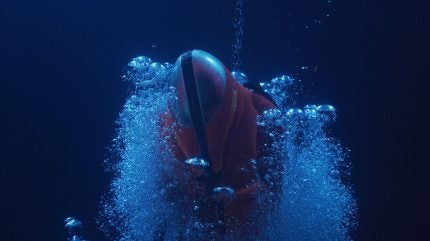
Defence survival system provider Survitec has secured a multi-year servicing contract from Sojitz Aerospace, on behalf of the Japanese Maritime Self-Defence Force (JMSDF), to service safety critical Submarine Escape Immersion Equipment (SEIE) MK11 suits carried on board its submarine fleet.
To this end, Survitec has established an in-country servicing capability to accommodate the JMSDF’s SEIE servicing and maintenance requirements through a strategic partnership with Kawasaki head-quartered Marinair Liferaft, according to a 17 June statement by the company.

Discover B2B Marketing That Performs
Combine business intelligence and editorial excellence to reach engaged professionals across 36 leading media platforms.
Throughout the contract, Marinair Liferaft will undertake the servicing of the SEIE MK11 suits in Japan in collaboration with Survitec, reducing overall maintenance costs and logistics expenses, while investing in regional capabilities at the new Kobe facility.
Survitec business development director David Stelling said: “We are excited about this partnership with Marinair and the opportunity it presents to further strengthen our relationship with the Japan Maritime Self-Defence Force.”
The scope of supply includes inspection and testing of the suits, covering visual inspection, stole pressure tests, ascent hood test, air holding test, inlet valve blast test, and CO₂ cylinder weigh check.
According to Survitec, its MK11 SEIE requires two service intervals to maintain the system’s ten-year design and service life. The MK11 SEIE has been acquired by 30 international operators, including the US Navy, Canadian Navy, and Italian Navy, and is intended to provide naval submarine crewmembers an ability to exit a stricken craft and reach the surface.

US Tariffs are shifting - will you react or anticipate?
Don’t let policy changes catch you off guard. Stay proactive with real-time data and expert analysis.
By GlobalDataGlobal submarine rescue capabilities
Operating at depths of hundreds of metres, the rescue of the crew of a naval submarine is one of the most complex and dangerous military evolutions possible, with few capable of conducting such operations.
Nato maintains a submarine rescue capability, which was called into action in 2017 during the unsuccessful effort to locate the Argentinian Navy submarine ARA San Juan, which was lost during a training exercise of the Argentinian coast. All 44 crewmembers were presumed to have died in the accident.
In 2018 the wreck of the ARA San Juan was found by a commercial subsurface drone operator, resting on the South Atlantic sea floor at a depth of more than 900 metres (m), or nearly 3,000ft.
Japan also operates a submarine rescue capability through the purpose-built JS Chiyoda, which carries its own crewed and remotely operated submersibles to help with the location and rescue of stricken submarine crews.

Submarine rescue suits are able to operate at significant depths, and work to manage the occupant’s rise to the surface in an attempt to avoid nitrogen build up in the blood, a condition that can be fatal.
Survitec’s MK11 system is designed to enable operators to escape at depth of up to 180m.
Training for such operations is carried out by many leading navies around the world in bespoke facilities, utilising systems such as the Mk 11 SEIE.





